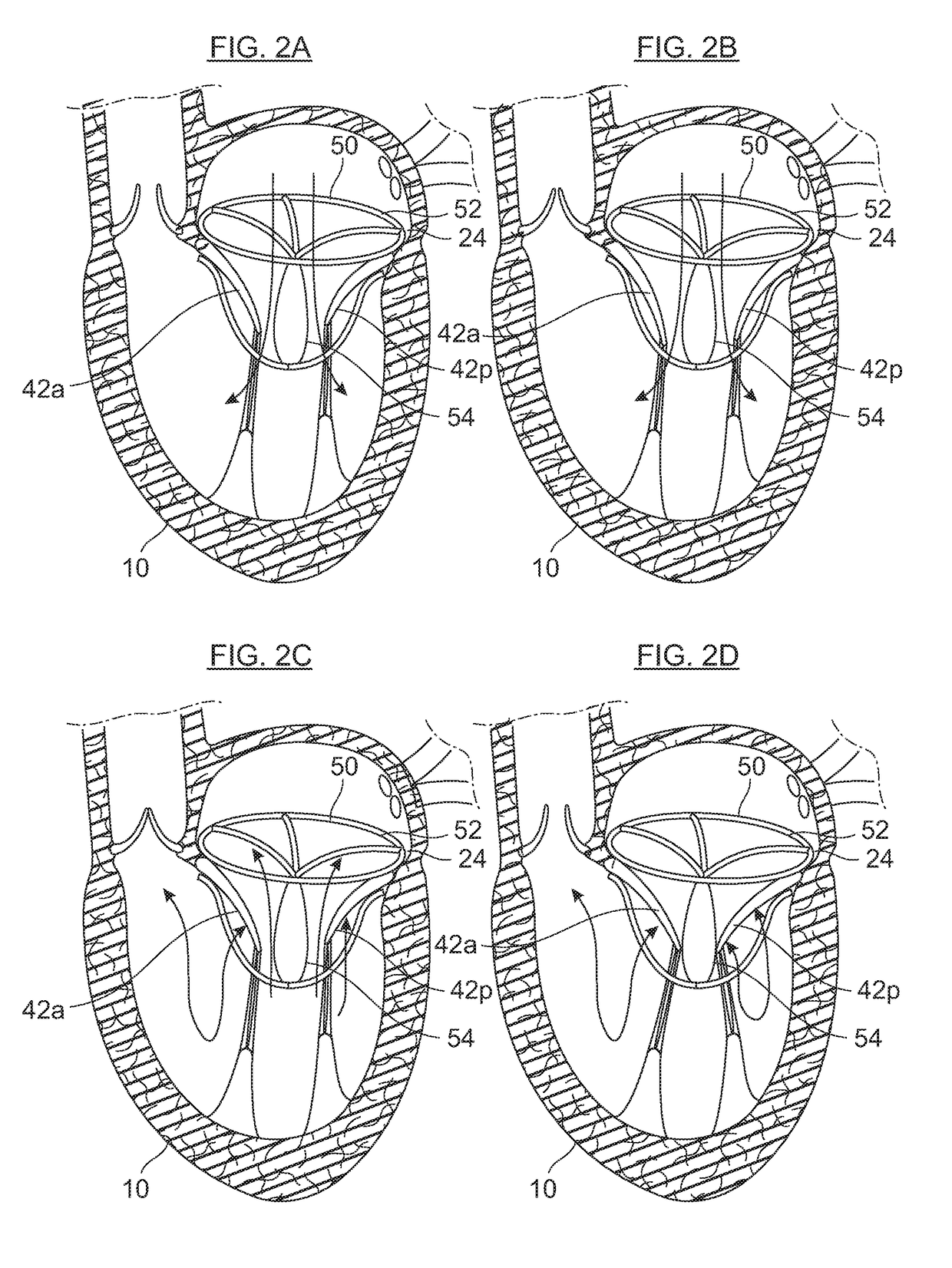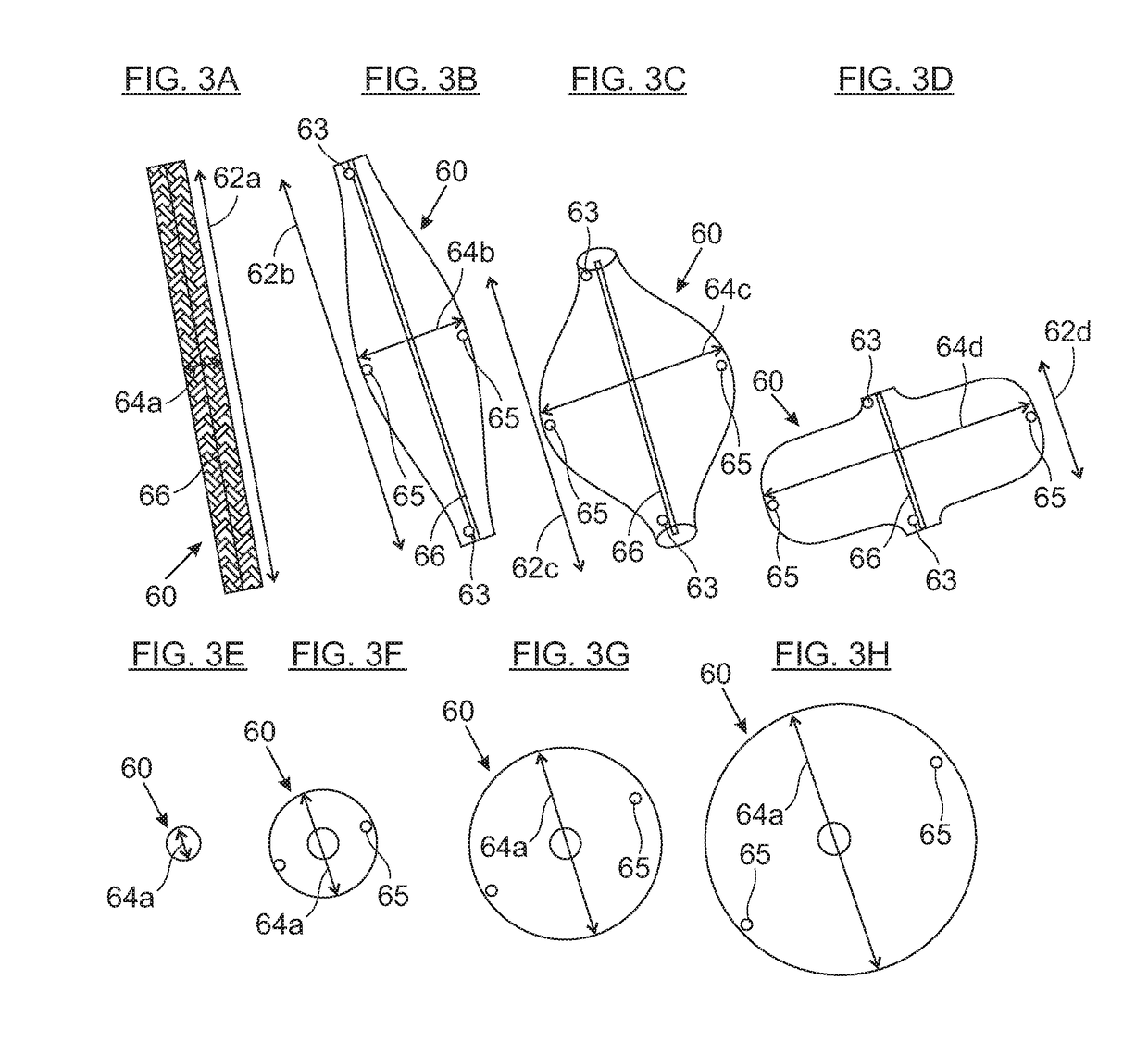Axisymmetric adjustable device for treating mitral regurgitation
a technology of mitral regurgitation and adjustable devices, which is applied in the field of repair of heart valves, can solve the problems of heart valves that cannot close properly, heart valves that cannot meet the needs of patients, and may be seriously affected by heart valve operation, so as to reduce or eliminate valve regurgitation, improve valve function, and improve the effect of valve function
- Summary
- Abstract
- Description
- Claims
- Application Information
AI Technical Summary
Benefits of technology
Problems solved by technology
Method used
Image
Examples
Embodiment Construction
[0051]A cross-sectional view of a human heart 10 is depicted in FIG. 1. The heart 10 has a muscular heart wall 11, an apex 19, and four chambers: right atrium 12; right ventricle 14; left atrium 16; and left ventricle 18. Blood flow is controlled by four main valves: tricuspid valve 20; pulmonary valve 22; mitral valve 24; and aortic valve 26. Blood flows through the superior vena cava 28 and the inferior vena cava 30 into the right atrium 12 of the heart 10. The right atrium 12 pumps blood through the tricuspid valve 20 (in an open configuration) and into the right ventricle 14. The right ventricle 14 then pumps blood out through the pulmonary valve 22 and into the pulmonary artery 32 (which branches into arteries leading to the lungs), with the tricuspid valve 20 closed to prevent blood from flowing from the right ventricle 14 back into the right atrium. Free edges of leaflets of the tricuspid valve 20 are connected via the right ventricular chordae tendinae 34 to the right ventri...
PUM
 Login to View More
Login to View More Abstract
Description
Claims
Application Information
 Login to View More
Login to View More - R&D
- Intellectual Property
- Life Sciences
- Materials
- Tech Scout
- Unparalleled Data Quality
- Higher Quality Content
- 60% Fewer Hallucinations
Browse by: Latest US Patents, China's latest patents, Technical Efficacy Thesaurus, Application Domain, Technology Topic, Popular Technical Reports.
© 2025 PatSnap. All rights reserved.Legal|Privacy policy|Modern Slavery Act Transparency Statement|Sitemap|About US| Contact US: help@patsnap.com



